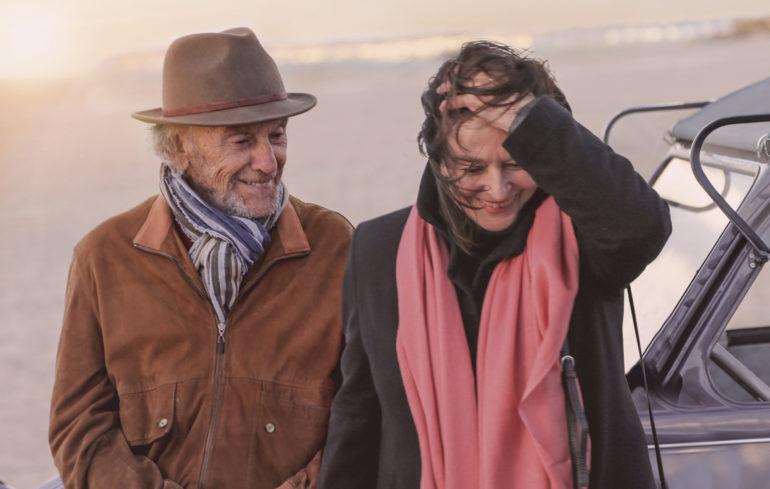Cannes Film Review: ‘The Best Years of a Life’
By Guy Lodge
LOS ANGELES (Variety.com) – Something unusual happened at the Cannes premiere of “The Best Years of a Life,” Claude Lelouch’s syrupy second sequel to his trend-setting 1966 global smash “A Man and a Woman.” Not the endless, roaring standing ovation that happened when the lights came up: That’s expected, even required, of the tuxed-up crowd at Grand Théâtre Lumière, for films far better and worse than this light fondant fancy. No, it came just after, as the applause eventually faded out and the vast audience harmonized in collective gibberish sing-song: Chaba-daba-da-daba-daba-da, da-da-da chaba-daba-da… — over and over, until beachside revelers some distance away could probably hear this mass karaoke spin on Francis Lai’s original 1966 love theme drifting on the breeze.
It was a sweet, decidedly uncool moment that emphasized what Lelouch’s sweet, decidedly uncool film (his 49th, and bearing more than a few signs of artistic fatigue) really is: not so much a freestanding feature as an unadulterated nostalgia trip, its modest effect dependent entirely on existing affection for a simple 53-year-old love story. Of course that film, elevated by modish but indelible technique and the combined shooting-star quality of Anouk Aimée and Jean-Louis Trintignant, won the Palme d’Or en route to a pair of Oscars; in 2019, Cannes programmers were under no illusion that this soft sliver of a reunion project was of Competition standard, instead granting it a Special Screenings slot where its uncomplicated singalong pleasures wouldn’t be strained.
Already out in France, where box office has been respectable but several leagues short of the original’s phenomenon status, “The Best Years of a Life” may be more of a streaming prospect in other territories. Indeed, smaller screens might be kinder to the film’s flat, textureless, partly iPhone-shot visuals, which are further shown up by extensive interpolation of lustrous clips from its predecessor — padding out these slender proceedings (shot in just 13 days) to an undemanding 90 minutes.
No matter: It’s those faces we’re here to see, however they’re lit and framed, and both Trintignant and Aimée (in her first screen appearance in seven years) can still fix the camera’s gaze with a single arch of the eyebrow. It’s on the former’s weathered, wearied visage that we close in on in the film’s opening frames, taking in the crevices of worry and exhaustion already so potently exploited by Michael Haneke in “Happy End” and “Amour,” certain themes of which Lelouch’s film rather more sunnily explores. Now pushing ninety and housed in a plush care facility, former racing-car driver Jean-Louis Duroc has little explicit memory of his playboy glory days and only sporadically recognizes his patient son Antoine (Antoine Sire, reprising his childhood role from the original), though he is alert enough to maintain a rakish, playfully reciprocated flirtation with the chief warden (Marianne Denicoirt).
His slide into dementia is spiked, though, with more vivid, specific recollections of his long-ago romance Anne Gauthier (Aimée), to whom the years have been more kind: Still sprightly and independent, she has retired from her former career as a film producer to run a quaint village store in Normandy, with doting children and grandchildren close at hand. When Antoine looks her up and suggests she visit his ailing dad, she agrees with some reluctance, but only minutes into their reunion meeting — during which the addled old man at once recognizes her and treats her as a stranger — it’s clear that the old chemistry is still there and bubbling. The ensuing trip down memory lane is spliced across conversations, dreams and delusions; extended stretches of the film, including a critical revisit to the Deauville hotel suite where it all began, play out in Jean-Louis’s tangled mind.
“The Best Years of a Life” proceeds as if the events of Lelouch’s misbegotten 1988 sequel, “A Man and a Woman: 20 Years Later,” never happened: Perhaps they’ve been forgotten or tactfully ignored by Jean-Louis and Anne, or the director is enacting his own form of selective memory. Either way, the five decades separating the present and favored past are treated as, well, a mere wrinkle in time. Cinematically, the film is most interesting when it explores the elasticity of time itself, as in a lengthy, vaguely hypnotic sequence that superimposes scenes from both films over repurposed footage from Lelouch’s 1976 short “Rendezvous,” documenting a high-speed drive through central Paris with a hood-mounted camera. Here, the characters’ fictional reflections tip over into a nostalgic collage of Lelouch’s own filmmaking reminiscences.
When we’re not dipping into the director’s back catalog, however, this is an exercise in more sludgily prosaic sentimentalism, working towards beatific closure for everyone involved. Jean-Louis and Anne’s twinkly-sad rebonding is set to a soundtrack that seems designed to back up the actors’ powers of expression just in case, with a repetitive,, Calogero-composed original song score of overwrought chansons putting their conflicted emotions into words.
Chaba-daba-da would have sufficed: Working with lightly defined updates of characters who were never exactly Chekhovian in their complexity to begin with, Trintignant and Aimée bring the film all the bittersweet gravitas they can manage, elevating the featherweight drama with a palpable sense of longing and a shared, rueful acknowledgement of mortality, etched in skin; we sense, just maybe, the actors implicated in these emotions as much as the lovers they’re playing. Both were drawn out of retirement for this project, so if “The Best Years of a Life” is the last time we see either on screen, it’s a farewell as apposite as it is slight.

